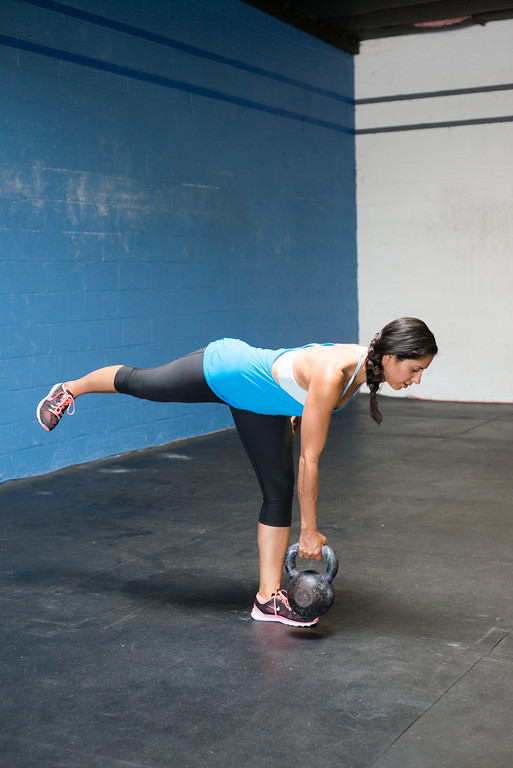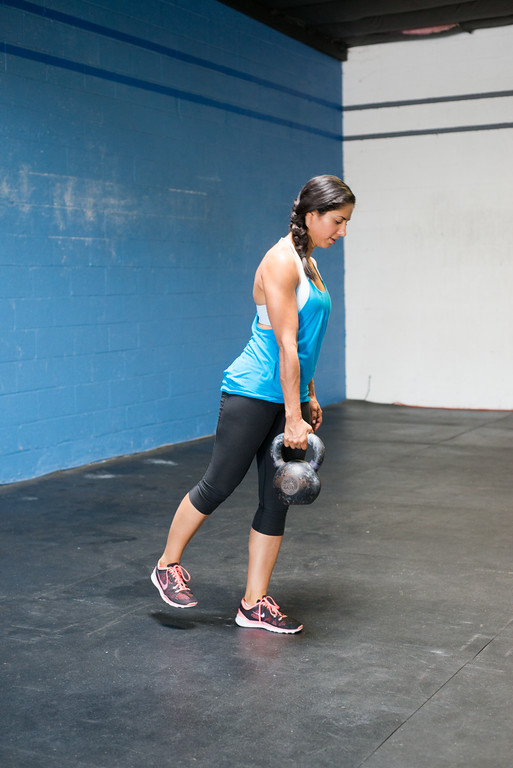As far as single-leg training goes, I’m confident that anyone with legs can benefit from the single-leg barbell deadlift. The exercise packs a major punch in terms of benefits, and it’s one I recently re-acquainted myself with.
What is it: Single-leg barbell deadlift (SLBDL)
Who is it best for: Intermediate and advanced trainees who have mastered the hinge pattern and have shown proficiency in one of the SLBDL’s regressions (more on that later).
Benefits: Balance, builds strength unilaterally, corrects muscular imbalances, back friendly, improves your squat and deadlift, injury-proofs your body, booty gainz, hip and glute strengthener, saves puppies from burning buildings, promotes world peace….I mean, this exercise does A LOT!
Clearly, the SLBDL has a lot to offer, and is an exercise you should [eventually] do if strength, performance, and general health is a goal.
Low risk, high reward
After my back injury a year and a half ago, I put a heavy emphasis on single-leg training in an effort to clean up my movement patterns and correct imbalances. Even now, doing a SLBDL on my right side (the injury site) still feels wobbly and unstable – a hint that there’s still lots of work to do before I return to heavy deadlifting.
What I love about this exercise in particular, is that it offers a low risk, high reward training stimulus for people like me who can’t tolerate conventional deadlifts.
Programming an exercise like this for my clients offers a slew of benefits too. The SLBDL has a very small tolerance for mistakes. Go too heavy, and this exercise will be too difficult to do. Get sloppy, you’ll lose balance. Execute it improperly and you will lose your footing, feel a twinge in your back, or lose the bar.
With that said, it’s still an advanced exercise for experienced trainees, but there are other variations featured in my #StrongBodyChallenge (Join HERE) that are more beginner friendly:
- Bodyweight one-leg RDL with or without arm reach
- 2-dumbbell or 2-kettlebell one-leg RDL (see video above)
- Contralateral one-leg RDL

- Barbell version
https://www.instagram.com/p/BiIcSbNnXl_/?taken-by=trishdfit
Common mistakes and how to fix them
There are a few ways to butcher this exercise and make them work against you. Don’t be that guy (or girl). Avoid doing any of these:
Rounding your spine:
- This is like deadlift rule numero uno. Don’t round your f&*king spine! Instead, maintain a neutral spine with your core “turned on” so you don’t get sloppy.
- I cue my clients to avoid this mistake is by making them do a few deadbugs beforehand. Then when they execute the SLBDL I just say “Find your deadbug” and they get it.
- Keep the barbell close to your body the whole time. I like to cue “trace your legs with the barbell” to prevent the client from letting the barbell swing forward and thereby, round their backs.
Rotating the hips or back leg:
- This is likely the most common mistake I see with any version of the single-leg deadlift but an easy one to fix.
- As you hinge, point your hip bones to the floor and avoid letting your hip open or rotate.
Focusing too much on the back leg:
- For whatever reason, I see some trainees place a greater emphasis on how far the back leg can go. STOP.
- Instead of kicking the back leg as high as it can go, think of reaching the back leg to a back wall as you hinge.
- The back leg “floats” or “goes along for the ride”. It should not be the center of attention on this exercise.
Staying soft (insert all the D jokes here) in the lats:
- Conventional deadlifts demand that your lats are fully engaged, and it’s not any different in the SLBDL.
- I like to tell clients to “Grip the bar and try to break it in half.”
- Another cue I use and learned through Pilates is to push down on your pinkie finger (around the bar). It may not seem like much but the pinkie finger is the gateway to your lats and serratus. Turn them on when you deadlift in any way.

